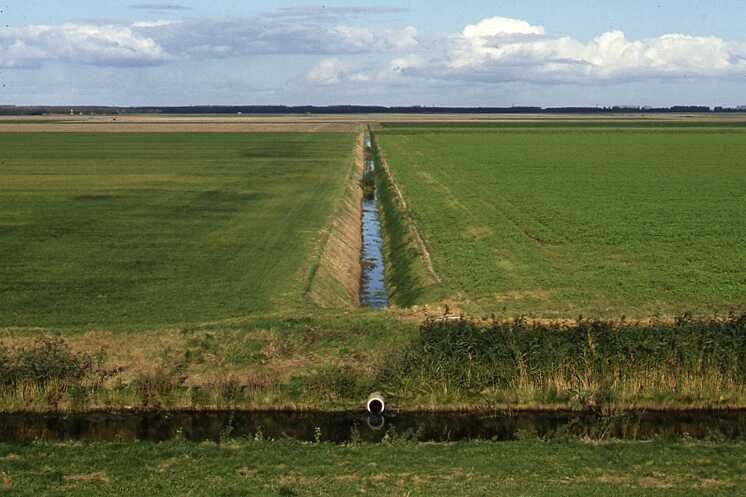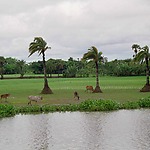These polders are usually located in the plains along rivers, in depressions in the landscape and in the coastal and deltaic areas. Three types of polders can be distinguished: i) reclaimed low-lying lands; ii) lands gained on the sea; iii) drained lakes. In addition to the Netherlands, countries with many polders are Bangladesh, China, Germany, Japan, the United States and South Korea.
Characteristic for polders is that these areas are unsuitable for habitation, agricultural exploitation, urbanisation, etc. without artificial water management in the form of drainage and discharge of excess water, possibly combined with irrigation, and protection against flooding. The drained lakes, to which the IJsselmeerpolders in the Netherlands belong, are the most obvious example of this, since drainage by pumping is necessary here right from the beginning. Polder Flevoland - almost 1,000 square kilometres - is also specific in the sense that several destinations were developed immediately after reclamation, something that has not yet been done anywhere else in the world, at this scale and in the way in which it has been realised.
Polders have been constructed in various climates, below sea level, but also far above it, in various forms and qualities. As far as is known, more than 750,000 square kilometres have been reclaimed in the world in one way or another. The deepest polder is probably the Lammefjord Polder in Denmark, where the deepest point is located at approximately 7.50 metres below MSL (mean sea level). The highest polder is probably the area of former Lake Texcoco where Mexico City is located. This polder is located at approximately 2,236 metres above MSL. However, there are polders that are not as deep, but are lower than the Lammefjord Polder. For example, there are polders along the Caspian Sea at almost 30 metres below MSL. However, the level of the Caspian Sea is approximately 28 metres below MSL.
Polders vary from very primitive to very advanced. For example, in the downstream reaches of the rivers in West Africa there are many small polders with one to two metres high dikes and a lockable culvert for drainage, and possibly for irrigation water supply. In Taiwan there is a polder with very high-quality factories and offices in it, which as far as I know, has a drainage capacity of about two metres per day over the surface of the polder, by a pumping station. For comparison, in the Netherlands urbanized polders the drainage capacity is at most a water layer of 25 millimetres per day.
The majority of the polders were constructed for agricultural use, with a distinction between growing rice, where a certain inundation is achieved during the growing season, and growing dry crops, where a certain groundwater table is maintained; in addition, there are urban and industrial polders, but also for example, polders for airports and oil extraction. In South Sudan, a polder was constructed for a refugee camp.
For the management of the polders, a distinction must be made between water management and flood protection. As far as water management is concerned, a distinction is usually made between the desired conditions, especially with regard to the water level, and the situation under extreme conditions. The design of the water management systems and the preferred operation and maintenance are tailored to this.
As far as flood protection is concerned, three types of protection can be distinguished in principle. The simplest is protection during the growing season of the crops. A step further is protection during the greater part of the year, but no longer during the peak of the discharge of the adjacent river. This has the advantage that there is also a lot of fertile silt in the water during the peak. This then remains on the fields and can function as fertiliser during the next growing season.
Finally, there are the polders with a protection against extreme circumstances up to a certain level. As far as this protection is concerned, in many countries, especially in polders with urban areas, there is a much too low level of protection. In comparison, the Netherlands polders are protected against flooding from the rivers that can occur with a probability of once every 1,250 years. For flooding from the sea, the probability is once every 10,000 years for most of the coastal areas.
The Netherlands has an extensive programme to increase these safety levels even further. In almost all other countries, the level of protection is based on a probability of occurrence of at most once per 100 to 200 years, which can lead to major damage, especially for polders with cities. There are now many examples of such floods. Just think of the recent floods in New Orleans, parts of England, various urban polders in China, Bangkok, Jakarta, etc. The flooding is often attributed to climate change, but this is often not the primary cause. The primary cause is usually the level of protection that is too low. We can very much hope that significant improvements will be made with respect to this in the coming years.




